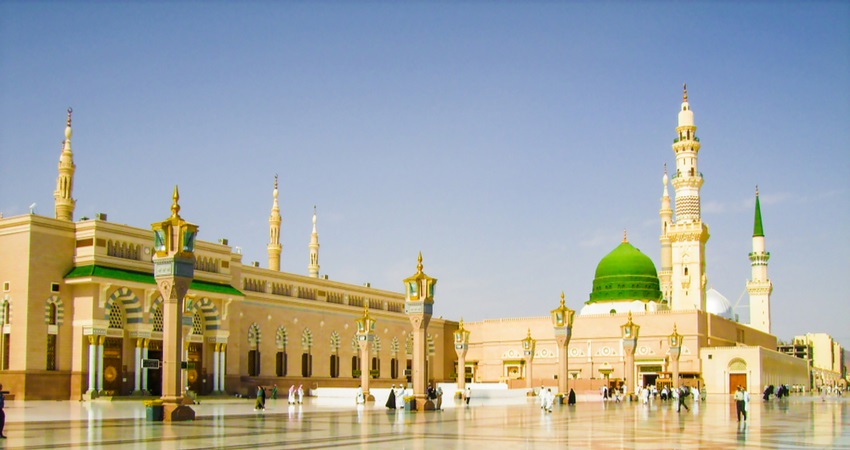Masjid-e-Nabawi, The Prophet’s Mosque in Madinah
The second most respected and second largest mosque after Masjid al-Haram in Makkah is Masjid-e-Nabawi located in the holy city of Madinah, Saudi Arabia. The mosque was built by the prophet upon his migration to Madinah.
History of Masjid-e-Nabawi
The history of the Masjid e Nabwi can be traced from the time when the Prophet migrated to Madinah. The chiefs and his immediate followers wanted him to stop by their house. But the Prophet politely said that wherever his camel will stop that would be his home. The camel moved slowly and knelt after reaching the site of the present mosque. The land was owned by two orphans Sahl and Suhayl. They insisted on giving the land to the prophet as a gift, but the Prophet desired to pay them. Abu Ayyub al-Ansari donated the money for the purchase of the land.
At the Prophet's command, the newly acquired courtyard was turned into a mosque. Initially, the mosque was an open-air building that was also utilized as a community center, court of law, and spiritual school. Then a raised platform was also constructed for the people who were enlightened about the holy Quran, and for the Prophet Muhammad (PBUH) to give the sermon on Fridays.
History under Prophet & the Rashidun
The mosque was built in 622 CE. The rectangular enclosure had three doors: The Door of Mercy (Bab al-Rahmah) to the south; Door of Gabriel (Bab Jibril) to the west, and Door of the Women (Bab al-Nisa) to the east. In the beginning, the qiblah was facing Jerusalem towards the north but when the qiblah direction was changed towards the holy Kaaba in Makkah, which is in the south, the masjid was also re-oriented accordingly.
During the reign of the first Rashidun caliph Abu Bakr, the mosque remained unmodified; it was altered by the second Rashidun caliph Umar. The mosque was demolished by the third Rashidun caliph Uthman in 649 CE and a new rectangular-shaped mosque was built with stones, and teakwood, facing Kaaba.
Mosque Under the Islamic reigns (660-1517 CE)
Umayyad caliph al-Walid renovated the mosque in 707 CE. A wall was built to segregate the mosque and houses of the Prophet Muhammad (PBUH)’s wives. The mosque was also erected in a trapezoid shape, which connected its northern part with the sanctuary.
During The Ottoman Rule
It was during the reign of Ottoman ruler Suleiman the Magnificent, that the east and west walls of Masjid-e Nabawi were rebuilt, and a new steel-covered dome was placed on the tomb of the prophet Muhammad. And the dome of the Prophet Muhammad (PBUH) was painted green in the year 1837 CE. It was after this it was named the Green Dome.
Masjid-e Nabawi under The King’s rule
Saud bin Abdul-Aziz and his followers demolished almost every tomb and dome except the green dome in the 1800s CE. The Ottoman rule came to an end after 400 years, and then came the Saudi rule.
It was during the Saudi rule, that the Masjid-e Nabawi underwent several changes. In 1951, as per the King’s command, the places around the mosque were demolished to expand the prayer hall of Masjid-e Nabawi. Later in the year 1985, the mosque was again expanded by demolishing the places around the mosque. Escalators and 27 courtyards were added to the Masjid-e Nabawi.
Taking into consideration that Masjid-e Nabawi is the second holiest site in Islam, it is among the top tourist destinations in Madinah. It is at this grand mosque the Prophet Muhammad (PBUH) is buried. Hence it is a significant site for pilgrims coming to Saudi Arabia for the pilgrimage of Hajj and Umrah.

Comments
Post a Comment